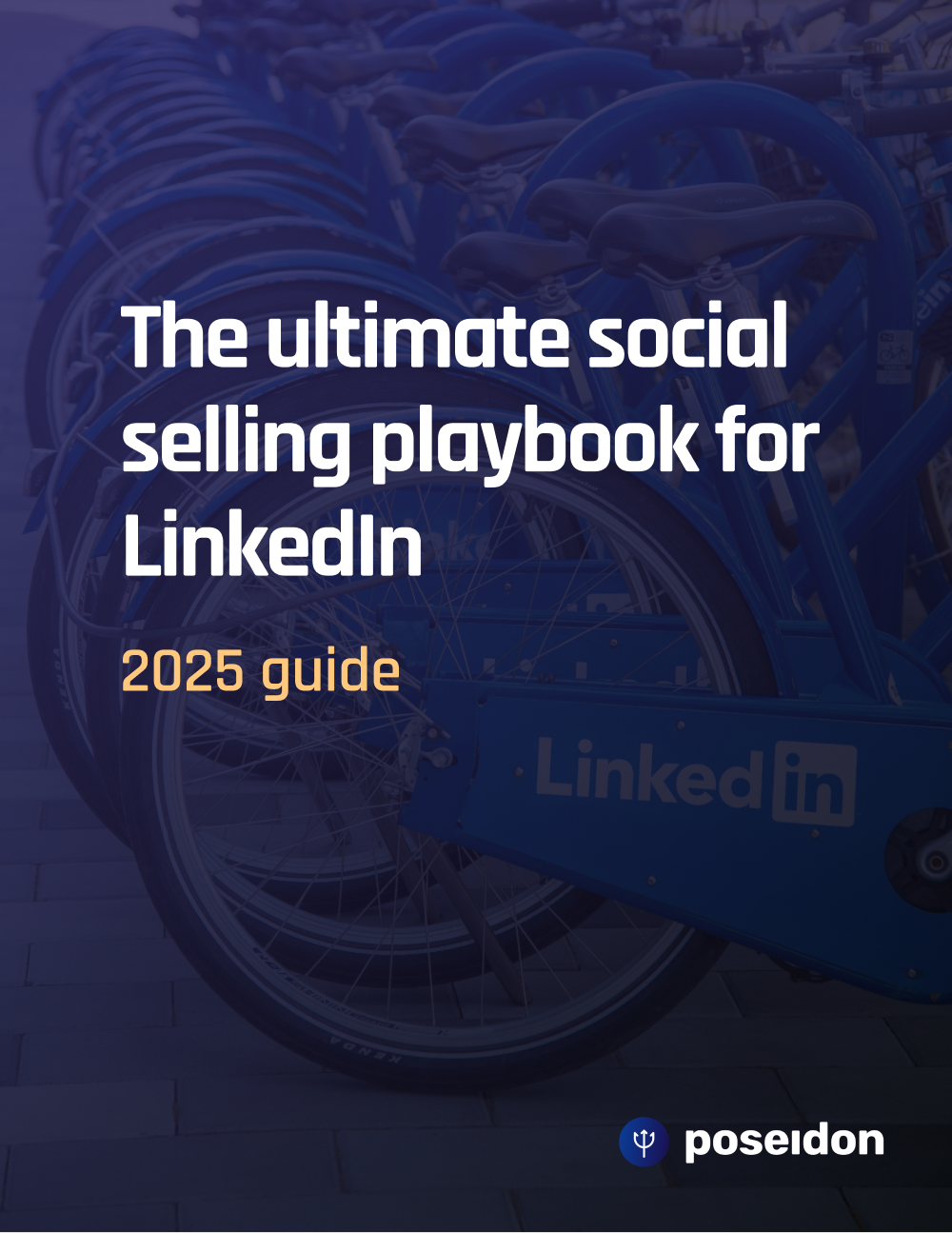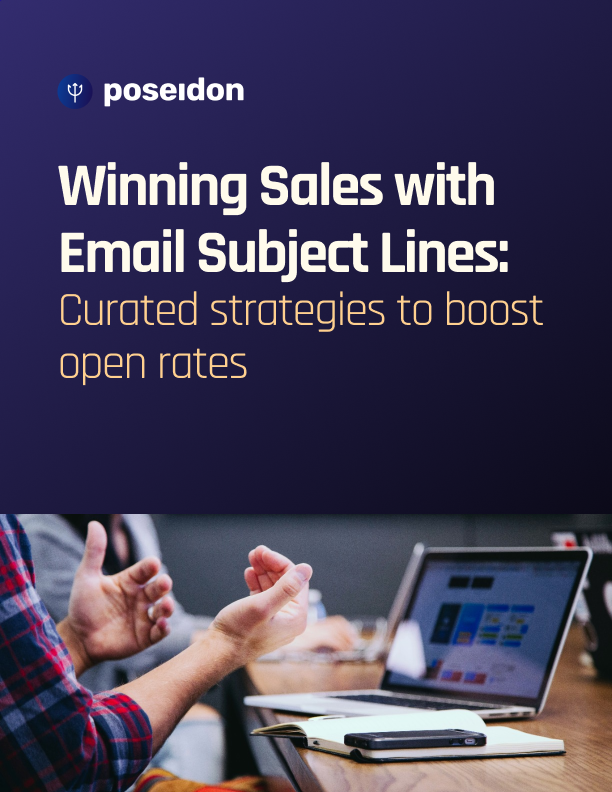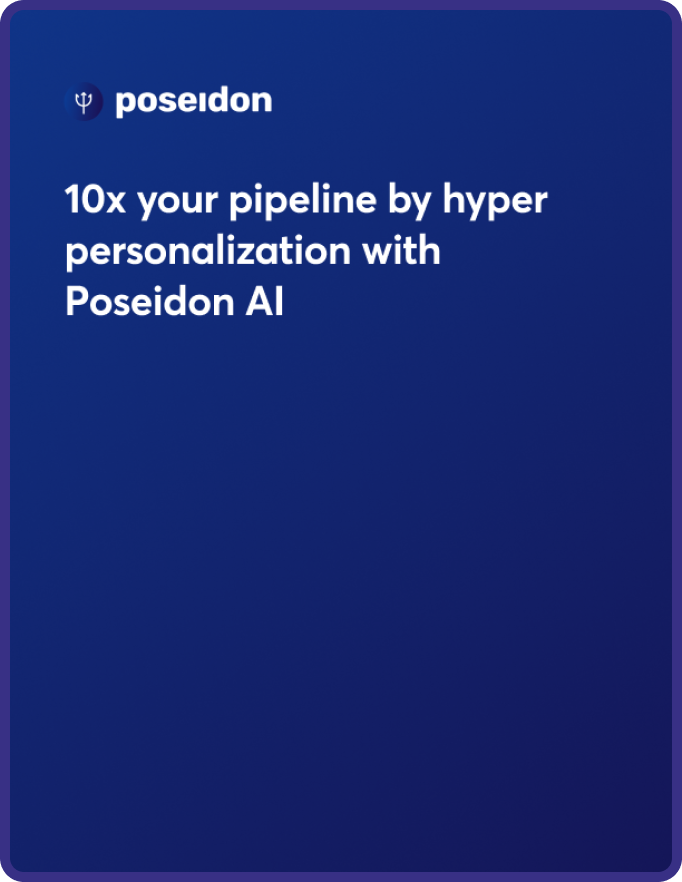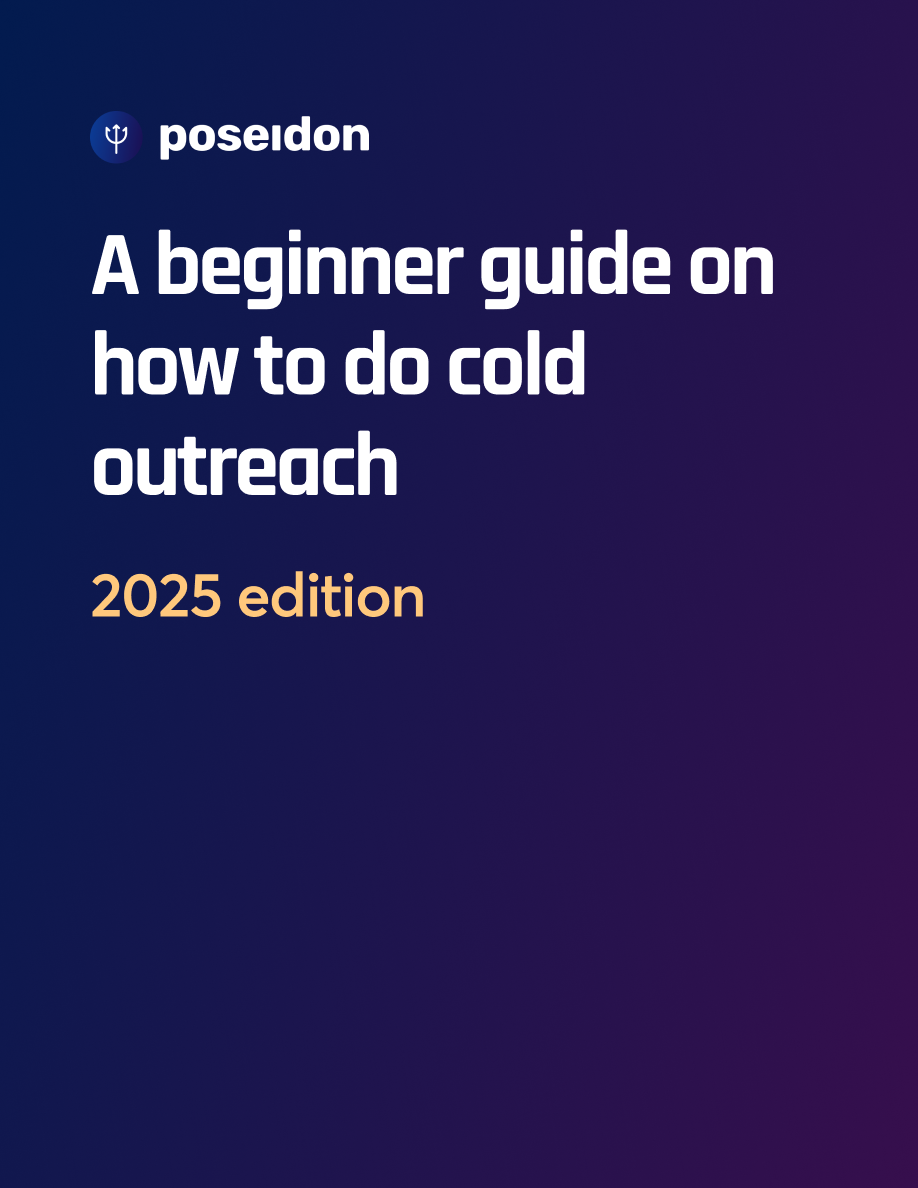Reports & Guides
Explore our collection of insightful reports and actionable guides to build successful sales pipelines and driving consistent revenue.
Poseidon Knowledge Center
AllAi for SalesCareerCertificationClient AcquisitionClient RetentionComplianceEducationFinancial AdvisorGrowth & DevelopmentLinkedinMarketingReviewSales

Master Sales Styles: Best Strategies To Get You More Deals
Sales

Ultimate Guide To Effective Customer Engagement Strategies 2025

Best LinkedIn Sales Strategy In 2025 [+Templates]
Sales

How To Bypass LinkedIn Connection Limit In 2025?
Linkedin

LinkedIn Xray Search: What Is It & How To Use It? (2025)
Linkedin

How RIAs Can Master LinkedIn Outreach
Financial Advisor

18 Best LinkedIn InMail Templates To Increase Reply Rate By 50%
Linkedin

10 Powerful Ways To Network On LinkedIn (2025 Guide)
Linkedin

15 Best LinkedIn Sales Message Templates That Work
Sales

Prospecting Strategies For Financial Advisors (2025)
Financial Advisor

Financial Advisor Email Templates (Tips + Samples)
Financial Advisor

Sales Cadence Strategies For Financial Advisors
Sales

Best Cold Calling Scripts For Financial Advisors (2025)
Sales

Social Media Compliance For Financial Advisors [Guide]
Financial Advisor
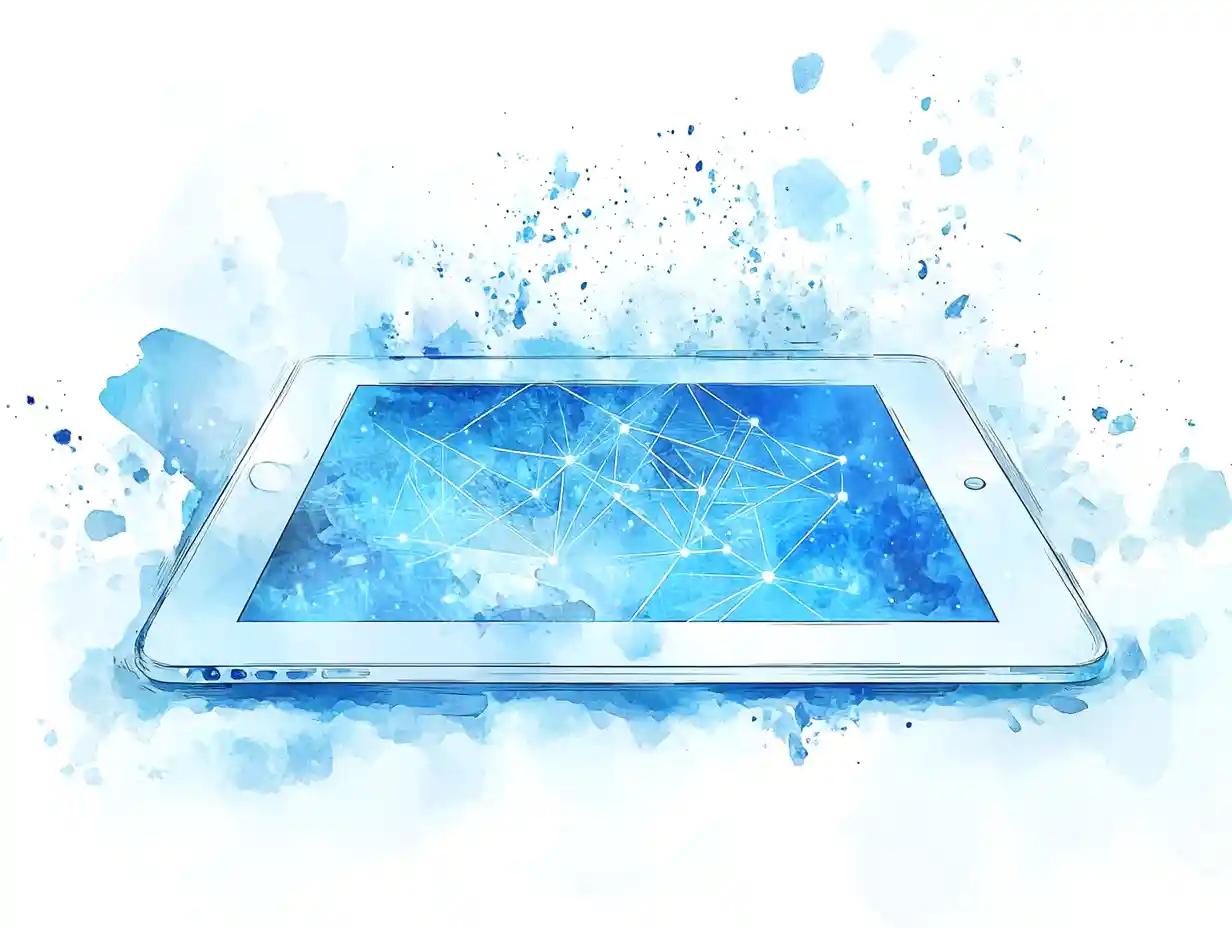
Digital Transformation In Wealth Management [2025]
Financial Advisor

How To Create Financial Advisor Sales Pitch + Examples
Sales

Ultimate Guide To Email Scripts For Financial Advisor
Financial Advisor

Ai In Wealth Management: Explained, Use Cases & Benefits
Ai for Sales

LinkedIn Marketing for Financial Advisors [2025 Guide]
Linkedin

RIA Compliance Checklist for Financial Advisors (2025)
Sales

Wealth Management for High-Net-Worth Individuals [Guide]
Financial Advisor

7 Best Financial Advisor Sales Training Programs
Sales

Top LinkedIn Lead Generation Strategies For Financial Advisors
Linkedin

8 Important Mistakes Financial Advisors Make & How To Fix Them

An Effective Guide To Financial Advisor Sales Funnel

5 Essential Financial Advisor Marketing Strategies

6 Steps To Create A Financial Advisor Marketing Plan

7 Financial Advisor Sales Strategies [Ultimate Guide]

7 Sales Pipeline Challenges & How To Fix Them
Sales

21 Common Sales Problems & Their Solutions
Sales

What Is B2B Intent Data & How To Use It? [Guide]

Outbound Sales Automation: Strategies & Best Practices
Sales

High Ticket Clients: 10 Ways To Prospect [Guide]
Sales

Effective Sales Coaching: Best Practices & Guide
Sales

SDR Checklist: 8 Effective SDR Onboarding Steps

How To Build An Outbound Sales Team [Guide]
Sales

How To Use LinkedIn To Build Personal Brand
Linkedin

Local Lead Generation: All You Need To Know
Sales

Multichannel Outreach: An Ultimate Guide For Sales

What Is Customer Retention? [Full Guide]

5 Outbound Sales KPIs You Should Never Miss
Sales

5 B2B Sales Strategies That Work Perfectly
Sales

7 Social Selling Strategy That You Can Implement

How To Use LinkedIn For B2B Marketing [Guide]

How To Do Outreach Automation [Step-by-step Guide]

How To Write A Polished Email Request (Best Practices)

How To Increase Email Deliverability [Step-by-step Guide]
Sales

Top Lead Generation Mistakes To Avoid [Guide]

Objection Handling in Sales: 10 Best Strategies
Sales

Split Testing In Sales: A Guide To Increase Response Rate
Sales

How To Keep Cold Emails Out Of The Spam Folder: Effective Strategies

Customer Retention Strategies That Work In 2024
Sales

What Is Social Selling The Inbound Way? (2025)
Sales

Cold Outreach 101: Best Practices & Strategies That Work
Sales

Sales Forecasting Methods That Work In 2025
Sales

What Is Social Selling? All You Need To Know
Sales

B2B Sales Outreach: Everything You Need To Know
Sales

How To Improve Sales Efficiency? Metrics, Best Strategies
Sales

How To Create B2B Buyer Persona: Ultimate Guide
Sales

Sales Efficiency: Key Metrics, Strategies [Ultimate Guide]
Sales

How To Automate LinkedIn Messages: Ultimate Guide [2025]

How To Write Great Prospecting Emails: Ultimate Guide (2025)
Sales

Email Deliverability In 2025: Key Practices [Guide]

How To Use Generative Ai In Sales Prospecting
Ai for Sales

LinkedIn Prospecting: How To Prospect With LinkedIn 101
Linkedin

What Is Lead Scoring & How To Score Leads Easily?

How To End An Email Properly [Step-by-step Guide]

How To Write A Follow-up Email After No Response [Guide]

How To Monitor Account Based Sales: A Step-by-Step Guide
Sales

Are LinkedIn Groups Worth It In 2025?: A Guide
Sales

How To Increase Outbound Sales: Key Strategies
Sales

How To Endorse Someone On LinkedIn [Guide]
Linkedin

Is Outbound Sales Hard? Here's 5 Winning Strategies
Sales

What Is Channel Sales: Comprehensive Strategies And Guide
Sales

How To Personalize LinkedIn Outreach? Step-by-Step Guide
Linkedin

Inbound Vs Outbound Sales: Key Differences, Strategies, And Best Practices
Sales

7 Sales Challenges that Sales Reps Face the Most
Sales

Write Sales Emails That Get Responses [5+ Email Templates]

What is Sales Prospecting: Strategies, Methods, And Techniques
Sales

Best Strategies for Effective Lead Acquisition in 2025
Sales

10X your LinkedIn Lead Generation Outreach [Proven Strategies]
Linkedin

Craft Effective Thank You Messages for LinkedIn [15+ Templates]
Linkedin

What's An Ideal Customer Profile (ICP)? Explained

Revenue Generation Strategies: A Comprehensive Guide
Sales

Sales Pipeline Management: Ultimate Guide & Best Practices 2025
Sales

Ultimate Guide To Effective Customer Engagement Strategies 2025
Sales

Outbound Sales Strategies That Work + 5 Best Practices
Sales

An Ultimate Guide To Sales Prospecting In 2025
Sales

Ai for Sales Prospecting: A Comprehensive Guide 2025
Ai for Sales

LinkedIn Social Selling Index 101: Everything You Need To Know
Linkedin

What Is Call To Action (CTA) & How To Write One?
Sales

What Is A Sales Cadence And How To Implement It Successfully?
Sales

LinkedIn Prospecting: A Complete Guide & Best Practices (2025)
Linkedin

How to Create Effective Sales Messaging Strategy

How to Use Ai for Sales Prospecting [Ai + Sales]

How to Find Prospects on LinkedIn: LinkedIn Prospecting Guide

Is LinkedIn Premium Worth it? LinkedIn Premium Review

How to Write LinkedIn Connection Request Message + Templates

Best LinkedIn Outreach Strategies in 2025: A Comprehensive Guide

6 Best Ways to Generate Leads on LinkedIn: Ultimate Guide

How to Write a Compelling LinkedIn Cold Message + Templates

How to Hibernate Your LinkedIn Account [Guide 2025]

How to Write a LinkedIn Summary Effectively: 7 Tips + Examples

4 Growth Strategies to Increase Your Customer Base

How to Use LinkedIn Groups: All You Need to Know in 2025

LinkedIn SEO: 7 Tips to Optimize Your LinkedIn Profile

What is AI Sales Assistant?: Definition, Uses, & Key Features

AI SDR: Ai-Powered SDRs to Automate Sales Development

How to Prospect in Network Marketing: 5 Effective Tips

How to use Ai in Sales: A Comprehensive Guide

AI Powered Sales Development or the best AI tools for AI-powered SDRs

Why You Need to Niche Down to Become More Profitable
Sales

LinkedIn Automation Warnings - What are they and How to Avoid Them
Linkedin

LinkedIn Sales Navigator Tips – Part 2 Tips for Better Prospect Nurturing
Linkedin

Using LinkedIn Sales Navigator Tips – Part 1: Better Prospecting

Prospecting Can Make or Break Your Sales Team

SDR as a Service Could be Your Sales Development Solution

Safe LinkedIn Automation is Possible for Your Sales Team

What is your Value Proposition and Why it Matters

A Guide to Account Based Sales
Sales

A Guide to B2B Account Based Marketing (ABM)

Account-Based Sales and How to Be Successful

How Many Sales Touchpoints do You Need During the Customer Journey

Outbound Sales isn't the Problem. Your Outbound Strategy Is

The Role of Visual Prospecting in Sales

3 Reasons Why Sales is Hard and How Social Selling Can Make a Difference

The Truth of Speed-to-Lead and 3 Sales Myths to Ignore

Training SDRs to Avoid Long Ramp Times and Improve Sales Development

Use Outbound on LinkedIn and Win

Outbound Strategies that Leverage Omnichannel Sales are Thriving

Omnichannel Outreach Needed Across Sales and Marketing

How to Sell with LinkedIn Sales Navigator – A Guide from Poseidon

LinkedIn Outbound Sales and Lead Generation that Work

Learnings from the Book "The Ultimate Sales Machine"

5 tips to create a more buyer centric sales process

Use Poseidon to export contacts from Linkedin Sales Navigator

6 ClearSlide Competitors to Improve Your Sales Engagement

Use Poseidon to Build your Network

6 Data-Driven Reasons to Use LinkedIn for Networking in 2022

Using LinkedIn Sales Navigator in addition to cold calling

LinkedIn for Sales: 6 Techniques Every Manager Should Know

